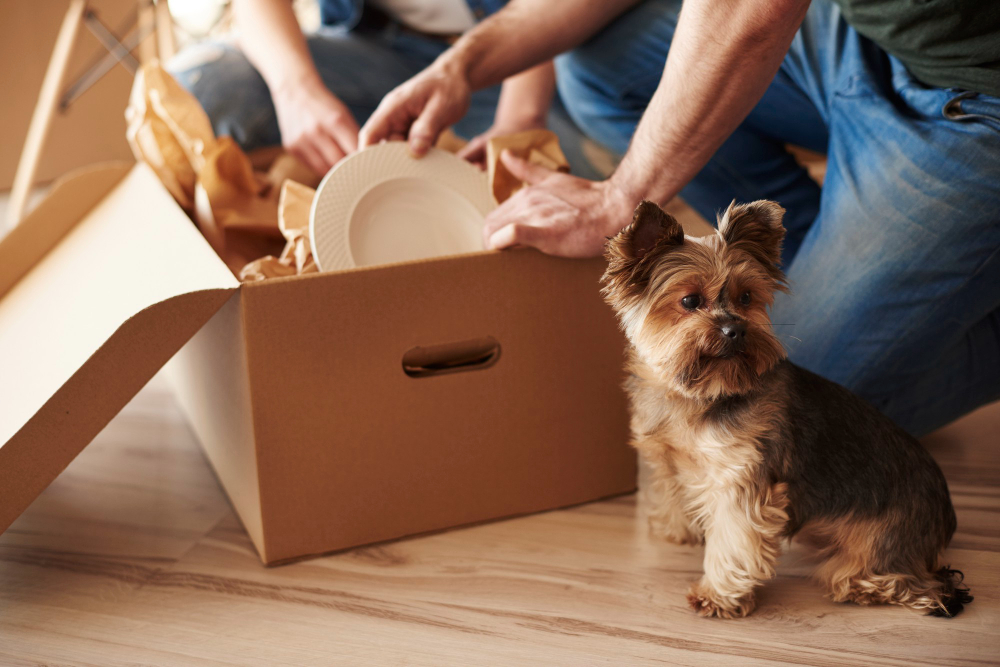

Moving to a new apartment can be stressful for everyone in the family—including your four-legged friends. Pets thrive on routine and familiar surroundings, so relocating to a new environment requires careful planning and patience. Whether you're moving across town or to a completely new city, these seven proven strategies will help ensure your pets adjust smoothly to their new apartment home.
Before diving into preparation strategies, it's important to recognize that pets experience moving stress differently than humans. Dogs may become anxious and exhibit behaviors like excessive barking or pacing. Cats often hide or refuse to eat when their environment changes. Small pets like birds or rabbits can become particularly sensitive to disruptions in their routine.
The key to successful pet relocation lies in maintaining as much consistency as possible while gradually introducing changes. This approach helps minimize anxiety and creates a positive association with the new living space.
The foundation of a successful move with pets starts with finding the right apartment community. Not all apartments welcome pets, and those that do often have specific restrictions and requirements.
Before committing to any apartment, thoroughly review the pet policy. Many communities have breed restrictions, weight limits, or limits on the number of pets per unit. Some apartments may require additional deposits or monthly pet fees. Understanding these requirements upfront prevents surprises later in the moving process.
Modern apartment communities often offer pet-specific amenities that can significantly improve your pet's quality of life. Look for features like:
These amenities not only benefit your pet but also provide opportunities to connect with other pet owners in the community.
Moving day itself can be overwhelming for pets. The constant activity, unfamiliar people, and disrupted routine can cause significant stress. A well-planned strategy helps minimize these challenges.
Set up a quiet, secure area where your pet can stay during the busiest parts of moving day. This might be a bathroom or bedroom with their favorite blanket, toys, and water bowl. Place a sign on the door to remind movers and helpers to keep it closed.
Keep your pet's essential items—food, water bowls, leash, litter box, and favorite toys—easily accessible throughout the move. Pack these items in a clearly labeled box that travels with you rather than on the moving truck.
For particularly anxious pets or complex moves, consider hiring professional pet relocation services. These specialists understand animal behavior and can provide additional support during the transition.
Once you arrive at your new apartment, focus on establishing familiar routines as quickly as possible. This helps your pet understand that despite the change in location, their daily structure remains consistent.
Before unpacking decorative items or organizing closets, prioritize setting up your pet's essential areas. Place food and water bowls in a quiet corner, establish a designated sleeping area, and if you have a cat, set up the litter box in a private location.
Keep feeding times consistent with your previous routine. Familiar meal schedules provide comfort and help establish the new space as home. If your pet seems stressed and isn't eating normally, try offering small amounts of their favorite treats or consider temporarily mixing in a small amount of their previous favorite food.
Rather than giving your pet immediate access to the entire apartment, consider gradually introducing them to different rooms. Start with one or two rooms where they can feel secure, then slowly expand their territory over several days.
Apartment living presents unique considerations compared to houses, especially for pets accustomed to yards or different living arrangements.
Apartments often mean closer neighbors and different sound patterns. Help your pet adjust to new noises by maintaining calm energy when sounds occur. For dogs that may bark at hallway noises, consider using white noise machines or calming music to mask unfamiliar sounds.
If you're moving from a house to an apartment, your cat's litter box location becomes more important. Choose a quiet, accessible spot away from food and water bowls. Ensure the location provides privacy while remaining convenient for daily maintenance.
Apartment living may require more intentional exercise planning. Research nearby parks, walking trails, and pet-friendly areas. For indoor cats, consider investing in new toys, climbing trees, or interactive feeders to provide mental stimulation in the smaller space.
One of the best aspects of apartment living with pets is the opportunity to connect with neighbors who share similar experiences. Building these relationships benefits both you and your pet.
Take time to meet other pet owners in your building or community. These connections can lead to valuable friendships and practical benefits like pet-sitting arrangements or walking buddies.
Research veterinarians, grooming services, and pet stores in your new area. Having these resources identified before you need them reduces stress and ensures continuity of care for your pet.
Many apartment communities host pet-friendly events or have informal groups where pet owners gather. These activities provide socialization opportunities for both you and your pet while helping you feel more connected to your new neighborhood.
The moving process doesn't end when you finish unpacking. Pay close attention to your pet's behavior and well-being during the first few weeks in your new apartment.
Common signs of moving stress in pets include changes in appetite, sleep patterns, or bathroom habits. Dogs might become more clingy or destructive, while cats may hide more than usual. Most pets adjust within two to four weeks, but persistent issues may require veterinary consultation.
Remember that adjustment takes time. Some pets adapt quickly, while others need several weeks to feel completely comfortable. Maintain consistent routines and provide extra patience and affection during this transition period.
If your pet shows signs of severe anxiety or adjustment issues persist beyond a month, consult with a veterinarian or animal behaviorist. They can provide specific strategies or recommend interventions to help your pet feel more secure.
Moving with pets requires extra planning and patience, but the effort pays off when you see your furry friend settled and happy in their new apartment home. Success comes from understanding your pet's needs, preparing thoroughly, and maintaining consistency throughout the transition.
Remember that every pet is unique, and what works for one may not work for another. Stay flexible with your approach while maintaining the core principles of routine, patience, and gradual introduction to new spaces.
The apartment community you choose plays a crucial role in your pet's long-term happiness and adjustment. Look for communities that not only allow pets but actively welcome them with thoughtful amenities and policies.
If you're looking for apartments in Wilson, NC, contact Oasis at Heritage today to schedule a personal tour. Our pet-friendly community offers amenities and features designed to help both you and your pets feel at home from day one.